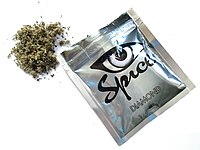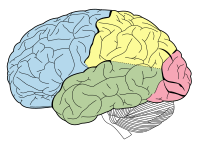
Identification of six tryptamine derivatives as designer drugs in illegal products
Sign Up to like & getrecommendations! Published in 2020 at "Forensic Toxicology"
DOI: 10.1007/s11419-020-00556-5
Abstract: Purpose To prevent the abuse of new designer drugs, Japan has declared 2385 substances and two plants as “Designated Substances” as of March 2020. Although the distribution of these substances has decreased over the past… read more here.
Keywords: six tryptamine; mass spectrometry; tryptamine derivatives; hydroxy ... See more keywords

Detection and identification of designer drugs by nanoparticle-based NMR chemosensing† †Electronic supplementary information (ESI) available. See DOI: 10.1039/c8sc01283k
Sign Up to like & getrecommendations! Published in 2018 at "Chemical Science"
DOI: 10.1039/c8sc01283k
Abstract: Unknown designer drugs can be recognized by self-organized nanoparticle receptors and identified by magnetization transfer NMR. read more here.
Keywords: designer; drugs nanoparticle; nanoparticle based; detection identification ... See more keywords

The use of chemogenetics in behavioural neuroscience: receptor variants, targeting approaches and caveats
Sign Up to like & getrecommendations! Published in 2018 at "British Journal of Pharmacology"
DOI: 10.1111/bph.14146
Abstract: The last decade has seen major advances in neuroscience tools allowing us to selectively modulate cellular pathways in freely moving animals. Chemogenetic approaches such as designer receptors exclusively activated by designer drugs (DREADDs) permit the… read more here.
Keywords: use chemogenetics; neuroscience; designer drugs; receptor ... See more keywords

Designer drugs: a medicinal chemistry perspective (II)
Sign Up to like & getrecommendations! Published in 2020 at "Annals of the New York Academy of Sciences"
DOI: 10.1111/nyas.14349
Abstract: During 2012–2018, the clandestine manufacture of new psychoactive substances (NPS) designed to circumvent substance control regulations increased exponentially worldwide, with concomitant increase in fatalities. This review focuses on three compound classes identified as synthetic opioids,… read more here.
Keywords: medicinal chemistry; chemistry; drugs medicinal; designer drugs ... See more keywords

Fentanyl-related designer drugs W-18 and W-15 lack appreciable opioid activity in vitro and in vivo.
Sign Up to like & getrecommendations! Published in 2017 at "JCI insight"
DOI: 10.1172/jci.insight.97222
Abstract: W-18 (4-chloro-N-[1-[2-(4-nitrophenyl)ethyl]-2-piperidinylidene]-benzenesulfonamide) and W-15 (4-chloro-N-[1-(2-phenylethyl)-2-piperidinylidene]-benzenesulfonamide) represent two emerging drugs of abuse chemically related to the potent opioid agonist fentanyl (N-(1-(2-phenylethyl)-4-piperidinyl)-N-phenylpropanamide). Here, we describe the comprehensive pharmacological profiles of W-18 and W-15, as examination of their… read more here.
Keywords: opioid activity; related designer; fentanyl related; designer drugs ... See more keywords

Designer drugs – still a threat?
Sign Up to like & getrecommendations! Published in 2019 at "Przeglad epidemiologiczny"
DOI: 10.32394/pe.73.23
Abstract: INTRODUCTION In Poland, an increasing number of psychoactive substances are becoming prohibited by law as psychotropic or narcotic substances, or as new psychoactive substances (NPSs). Owing to the enormous technological possibilities offered by today’s science,… read more here.
Keywords: designer; law; still threat; drugs still ... See more keywords